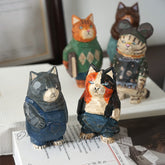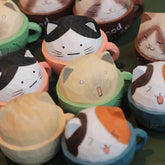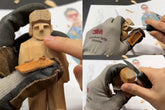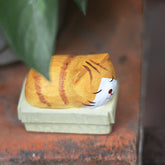Tips on tools and materials for making wooden gifts
In this blog post we introduce you to the tools and materials used in making wooden gifts, explain their differences and give certain recommendations. It is important to note that the tools we present are only suitable for carving small wooden figurines and are not suitable for large wooden sculptures or other types of wooden objects.
From the basic principles of carving wooden gifts
We can understand carving small wooden figurines as being able to control the wood with one hand and the tools with the other and will not use instruments to hold the wood in place or use chisels and hammers to create them as you would for a large sculpture.
We would like people to use lightweight tools to get started when making wooden gifts, in theory all you need is a carving knife and a piece of wood to get started, but this is highly desirable.
We need protective gloves if we want our hands to be safer, bench vices and saws if we want the daisies to be cut out faster, and swash plates if we want the knife to be always sharp. If we want more variations in shape, we need to use more different special knives, such as thin-cutting hobby knives or small sharp knives for details.
To make small wooden gifts you don't need too many kinds of tools, we know the purpose of the tool, the use of the scene, the material will make your needs clearer.
Next, we will let you know these tools from the complete carving process.
Wood Type Recommendation
Theoretically all woods can be used to make wooden figurines, but there is a difference between suitable and unsuitable. There is balsa, basswood, walnut, cherry, birch, maple all these commercial woods can be used for carving.
For hand carving we recommend a softer wood such as balsa or basswood. Wood carvers new to carving tend to wear out their enthusiasm by starting out with harder woods. Our carvers most often use basswood in their work. Basswood is one of the most common materials for carving, it is even and fine and the wood grain is not very visible, making it easy to carve details and paint colors.
Balsa can certainly be used, it is the softest commercial wood in the world, and bottle corks, for example, are balsa. But we think it is too soft, and it pinches out when you squeeze it with your hands. This very soft wood is rather more demanding on knives, and if the knife is not sharp enough the wood is simply squeezed or cracked.











